What’s the deal with the “Seinfeld” finale?
Long-running HBO sitcom “Curb Your Enthusiasm” recently ended on April 7th, 2024. The finale episode, “No Lessons Learned,” was released to great acclaim, and not just for its dry wit and charm. The finale received a lot of attention for serving as a homage and reference to the controversial finale episode of creator and star Larry Davids first show, “Seinfeld.”
“Seinfeld” had already been recirculating in the news back in October after stand-up comedian, actor and co-creator Jerry Seinfeld hinted at a possible future project finale. The comedian said at a comedy show that both he and co-creator and head writer David were in talks about doing “something”. What that something entails was left vague, but a reunion was implied. However, it isn’t clear how serious Seinfeld is, since actors Jason Alexander and Julia Louis-Dreyfus both seem to be left in the dark about this project, and Michael Richards has not mentioned it.
Seinfeld has openly admitted that he regrets the drama of the finale, and believes that “big is always bad in comedy.” The finale is, to many, not that funny, but does that devalue it completely?
“Seinfeld” famously ended on a high note. It left a legacy as the fourth most-viewed TV show finale in history, which put it ahead of competition like “Friends” and the “Cosby Show.” It was incredibly lucrative as well; by the final ninth season Jerry Seinfeld was making $1 million an episode while co-stars Louis-Dreyfus, Alexander and Richards each brought home around $600,000.
While the network it ran on, NBC, never wanted the show to end, Seinfeld didn’t agree. David left the show at the end of the seventh season because he feared the quality would decline. While they were equipped with a number of talented writers, the loss of David was a massive hit. The show still remained funny, and the ratings stayed on top, but the show ended just two seasons later. According to Alexander, it was a result of burnout and a feeling amongst the writers that there was nothing new that could be done with the characters.
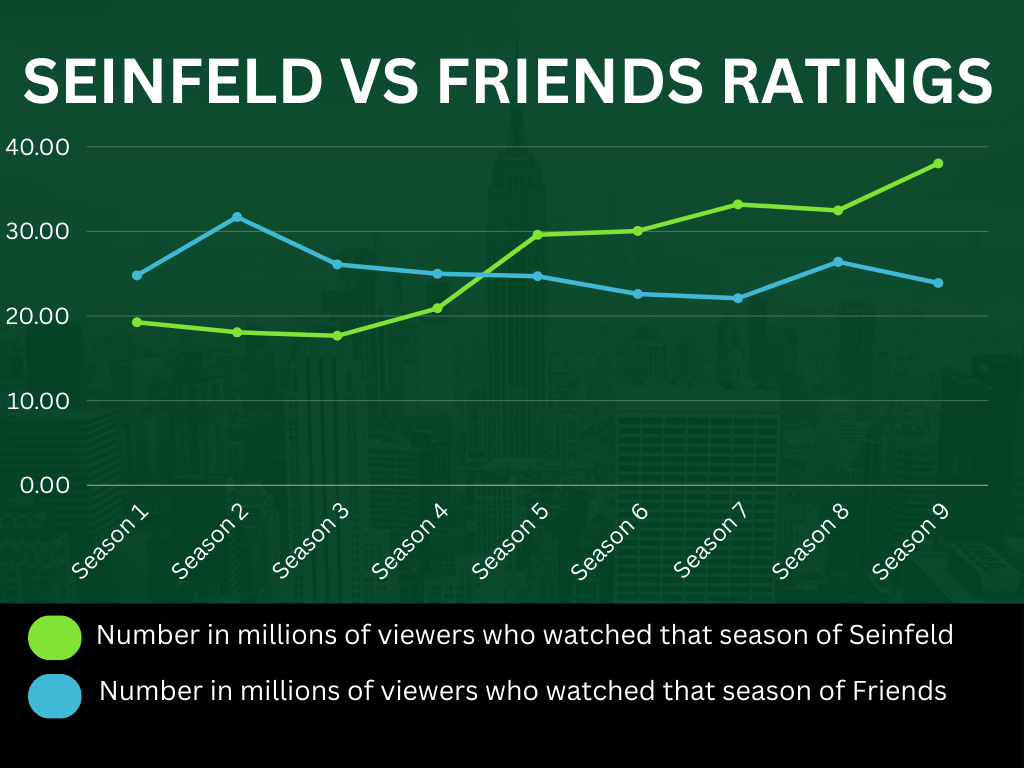
“[The first time I saw the finale], I cried for no less than an hour. I liked how it moves back around [and touches on earlier plotlines]. At the same time, seeing something so beautiful would make any respectable person just fall to their knees in tears,” said senior Tommy Eschbach.
“Seinfeld” is one of just a few shows to end on a high note. Far too often we see shows — particularly sitcoms — grow uninspired and exhaust once-devoted fans. As one of America’s most beloved shows, the end of Seinfeld was always going to be bittersweet. However, the finale did not receive a melancholic send-off. Instead, it was met with controversy, disappointment, and even betrayal.
The finale showed Jerry and his best friend George, portrayed by Jason Alexander, finally getting the deal of a lifetime. NBC is not only going to commission their show, but they will fly the two and their friends Elaine and Kramer out to any destination they choose. The four choose Paris, but on the flight there they have to make a quick pit stop in Latham, Massachusetts after complications with the plane arise.
While walking around the town, the group witnesses a man being mugged, but instead of doing anything about it, they mock the man for his weight while their friend Kramer films. They are found to have violated the town’s good samaritan law and are put on trial. In a proper full-circle moment many of the past guest characters who our main four have wronged in the past come back as witnesses, testifying of the wrong they had to endure as a result of their antics.
After hearing the testimonies of all the awful things Kramer, Elaine, Jerry and George have done, the judge overseeing their case decides they should end up in jail. The last conversation held by any of the characters is Jerry criticizing Georges’s shirt buttons — the same conversation that took place in the very first episode.
Though this ending is humorous, it’s polarizing. Fans felt upset; they had rooted for these characters for a decade, only for them to wind up with a horrible ending.
The problem with that kind of mindset lies with people’s misunderstanding of the characters. Each episode typically features the same plotline: one of the characters is stuck in an unfortunate situation, and then does something morally questionable but understandable, either as a reaction or to get out of the situation. People can see themselves in these characters; no one is perfect, and people do bad things.
“Jerry clearly does [belong in jail]. But George? My George? No. [To Elaine and Kramer] I’m indifferent,” said Eschbach.
But these poor actions accumulate over the years. Regardless of how understandable the actions may be sometimes, the characters are bad people.
The eponymous Jerry Seinfeld, like his namesake and actor, is also a stand-up comedian and Superman fanatic. He is often made into the straight man of the show, showing shock and sometimes disgust at the actions of his cohorts. But he equally commits such immoral actions. In the episode “The Rye,” Jerry steals a loaf of marble rye from an old woman. In another, “The Implant,” he breaks up with a woman because he suspects her breasts are fake. And in “The Merve Griffin Show” — or what would probably be the worst episode of the entire show had it not been for Kramer’s sub-plot — Jerry drugs a woman to play with her rare toy collection.
George is cold-blooded. In the episode “The Invitations,” his fiancée — whom he was dreading marrying — dies after he purchases cheap envelopes, and she passes away after licking them shut. Yet, George is not sad at his partner’s death, nor does he feel guilty that it was his cheapness that killed her. He’s not even indifferent. He is elated that his fiancée, a woman with a family and friends who love her, has died.
Kramer’s awful actions are typically more out of cluelessness than bad intent, but he has his moments. In “The Handicap Spot,” Kramer pressures George into parking in a handicapped spot, which indirectly leads to a woman in a wheelchair injuring herself. Kramer and George then go to replace her wheelchair, but a mix of Kramer’s apathy and George’s cheap streak ends with them buying the least expensive wheelchair in the store. Consequently, the wheelchair has faulty breaks, and the episode ends with the wheelchair speeding down a hill.
Even Elaine, arguably the most morally sound of the four, makes bad decisions. In the beginning, in a few episodes, we do see her having a strong moral compass. In “The Couch,” she hesitantly breaks up with a man she liked a lot because he was pro-life, and in “The Suicide” she gets herself and George kicked out of a psychic apartment because Elaine is appalled that the psychic is smoking while pregnant. Elaine’s antics rarely come close to the level of her male counterparts, but that doesn’t negate her selfishness. In “The Engagement,” she hires Kramer and Jerry’s antagonistic Newman to kidnap a noisy dog that lives in her apartment complex. Or in “The Soup Nazi,” she puts a small restaurant out of business because he hurt her feelings after she purposely provoked him.
These characters are simply not fit for society. Judge Art Vandelay, who appears in the finale, says it best. “I do not know how, or under what circumstances the four of you found each other, but your callous indifference and utter disregard for everything that is good and decent has rocked the very foundation upon which our society is built. I can think of nothing more fitting than for the four of you to spend a year removed from society so that you can contemplate the manner in which you have conducted yourselves.”
It would’ve been easy for the writers to phone it in and write some unmemorable, typical finale. They could’ve given the viewers exactly what they wanted: Jerry and George move to LA, they throw in the classic “one last walk around the apartment” scene, maybe finally revealing Jerry’s hidden fourth wall. And a kiss between Jerry and Elaine that is shoehorned in, and fans are happy.
But they didn’t. They did what was not only funny but made sense for the characters. “Seinfeld” has never been a sentimental show. The second any of the characters show real emotion, the others freak out. It would’ve been a disservice to the characters, to the fans and to art itself to pretend that the characters deserved any more than their stint in jail. This dedication to the integrity of the show alone is why many consider “Seinfeld” to be the first sitcom to transcend from a mere show to art.
The last conversation the characters have — the one about George’s shirt buttons — may seem like one final trivial conversation, but it’s probably the only deep one that they ever share. It reflects that throughout the series not a single character experienced any growth. They never learn a single lesson, inspiring the “no hugging, no learning” mantra that the show was famous for.


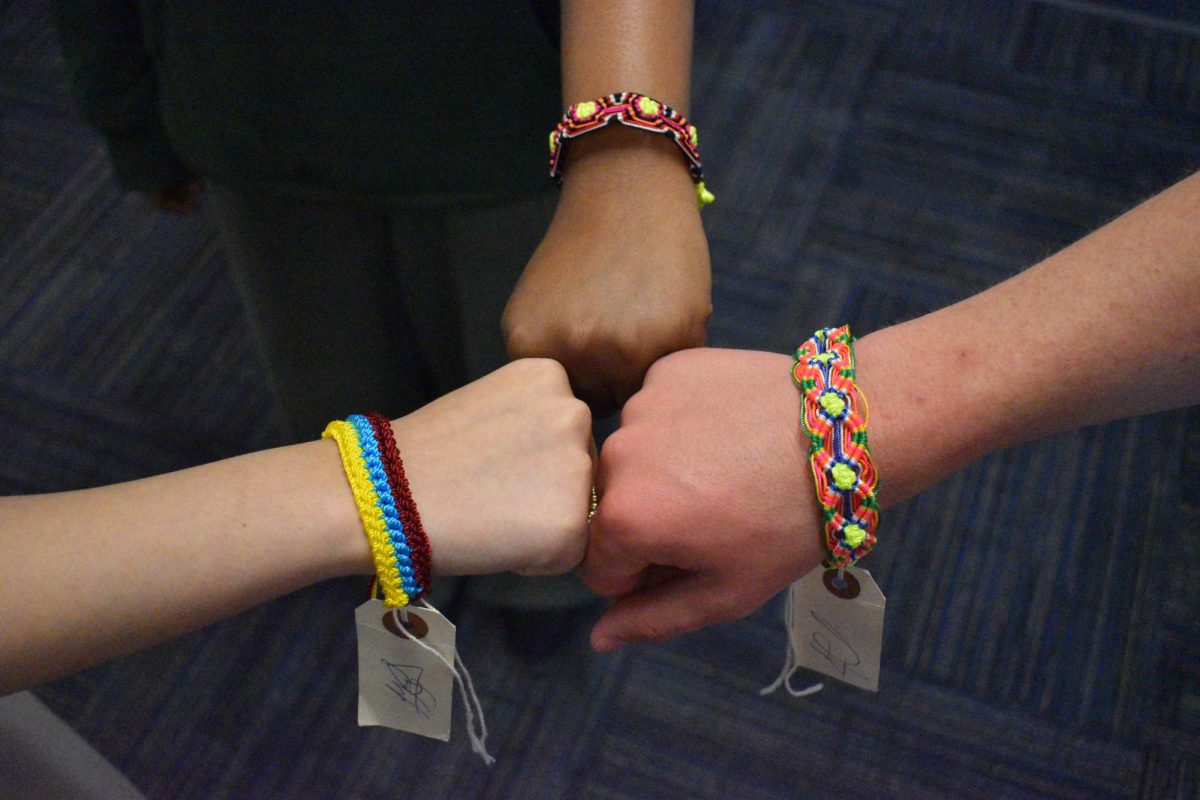



![Latin students pose for a group photo in front of historical ruins in Italy. From March 13 to March 23, the Latin department traversed cities in Italy to immerse students in an educational experience of a lifetime. “I enjoyed being able to learn about the different cultures. [The trip] encouraged me to see other peoples lifestyle and learn more about different histories,” senior Suraiya Saroar said.](https://pwestpathfinder.com/wp-content/uploads/2024/04/PXL_20240318_092633493.jpg)
![From Jan. 22 through Feb. 1, Parkway West High is displaying a wide array of art pieces made by students ranging from elementary to high school. All classes were represented on the displays in both the art wing and the main foyer of the school. “[Art] benefits me because in the middle of a busy day. I can just relax and have some fun doing art and it makes me happy. I think its important that you show art in the art show so that people can get inspired by it and be inspired to create their own pieces; it’s really impactful,” sophomore Dhiya Prasanna said.](https://pwestpathfinder.com/wp-content/uploads/2024/02/image1-1200x800.jpg)


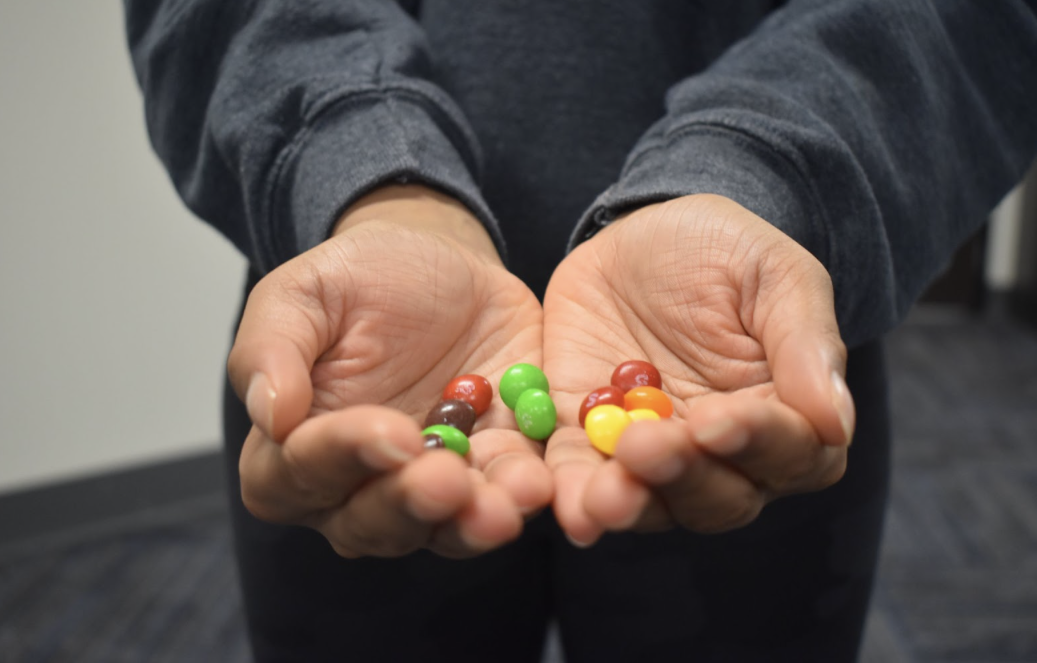


![Moviegoers smile for a picture after watching the Bollywood movie “3 Idiots.” The event ran from 4-8 p.m. on Saturday, March 9 and was open to students across the Parkway School District. “I decided to come to the movie night because I wanted to introduce my non-Indian friends to the rich culture and entertainment of Bollywood. One of my favorite parts [of the night] was the combination of [the] amazing food and the pure comedic entertainment. [It] was unmatched,” sophomore Aryan Allu said.](https://pwestpathfinder.com/wp-content/uploads/2024/03/IMG_5479-e1710180016483-1200x900.jpg)
![Senior Kylie Secrest volunteers at the blood drive signup table.The table provided students aged 16 and up with information about the drive and assisted them in the signup process. “We decorated the stand in the lunchroom with heart related or red decorations from either Dollar Tree or Five Below,” Secrest said. “This year was my first year doing [the blood drive] and it was fun. I got to be able to meet new people and help out the community.”](https://pwestpathfinder.com/wp-content/uploads/2024/03/image2-1200x800.jpg)


![Smiling widely, Principal John McCabe congratulates English teacher and English Department head Shannan Cremeens on winning the 2023-2024 Teacher of the Year title. Sophomore Cooper Oswald was a witness to the celebration. “We were all pretty excited. We were all clapping and standing up. We even [got to] take a picture with her,” Oswald said.](https://pwestpathfinder.com/wp-content/uploads/2023/12/TOYvertical-1200x954.png)
![Standing in front of the American Sign Language program’s mural, junior Brooke Hoenecke signs with freshman Darren Young. Hoenecke began cadet teaching for ASL this year alongside working towards earning her seal of biliteracy. “I was in ASL class when I received the email [that I qualified for the seal]. I was jumping up and down with my teacher and the rest of the class. One of the reasons why I took cadet teaching this year was so that I could prepare for the Seal of Biliteracy and be immersed in ASL,” Hoenecke said.](https://pwestpathfinder.com/wp-content/uploads/2024/05/hoenecke.jpeg)
![With a keen eye for detail, senior Natalie Lashly writes her signature onto the senior hand wall. After some encouragement from her friends, Lashly applied to make the hand wall with her Lorax-inspired design. I thought the [bright] colors would be fun. Our quote on the wall is Let us grow,’ based on the Let it grow song [from the movie]. [I was hoping that the design would] make the cafeteria feel more exciting, Lashly said.](https://pwestpathfinder.com/wp-content/uploads/2024/05/DSC_0099-1200x801.jpg)
![Walking onto the field, freshman Erastus Adewusi wears a pink jersey in remembrance of cancer awareness month. With the number seven on his jersey, Adewusi reflects on his life in Nigeria before moving to America. “I [used to wake up] at 5:30 a.m. and school would end at 5 p.m. [versus] now,” Adewusi said.](https://pwestpathfinder.com/wp-content/uploads/2024/05/DSC_0029-1200x800.jpg)

![Envisioning a cathedral in his mind, senior Soren Frederick puts pencil to paper and practices a rough sketch in the drawing room. Frederick grew up surrounded by a family of artists who helped him realize his passion for drawing and painting as he matured. “My family [is] very much [an inspiration] for drawing and painting. [Art] didn’t start [in the family] with me; it started with my mom and my older sister, and my older brother is very good at drawing [too],” Frederick said.](https://pwestpathfinder.com/wp-content/uploads/2024/05/DSC_0017-1200x800.jpg)
![Junior Amelia Geistler poses with her aunt, uncle and cousin. Moving through childhood, Geistler learned that having parents with a different appearance from her meant facing awkward, upsetting situations. “Something I faced [after] being adopted was that I was [treated] better when people discovered I had white parents. A childhood memory [is] when I went over to a friends house for the first time and her parents seemed to be very passive-aggressive, but when they learned I was adopted by white parents, they gave me equal treatment and ‘love’ as their white daughter,” Geistler said.](https://pwestpathfinder.com/wp-content/uploads/2024/04/Screenshot-2024-04-30-7.54.03-AM.png)
![Business and personal finance teacher Evan Stern stands in front of his classroom. After facing hardships growing up, Stern learned how to deal with them with the help of role models like his dad. “We dealt with some trauma when I was in middle school, and my dad had to be responsible for all three of us while he was working full-time. I know he had to sacrifice a lot. Im sure it was really hard for him, but looking back on it, he did a really good job . I didnt appreciate everything that he did at the time because I was so young. Now, Im engaged and probably going to have kids of my own in the next couple of years so I [am starting] to look at things differently,” Stern said.](https://pwestpathfinder.com/wp-content/uploads/2024/02/Untitled-7-1200x900.jpg)
![Holding his two smiling daughters in his arms, Principal John McCabe celebrates earning his doctorate degree. He attended Maryville University for two years and reached his goal of achieving a Doctor of Education: Educational Leadership degree after months upon months of hard work and long nights. “Im not going to lie, Im glad I have another night of my life back when Im not at school till very late,” McCabe said. “I can spend more time with my family and with my friends [who] are here at [West]. Im really happy about that.”](https://pwestpathfinder.com/wp-content/uploads/2024/01/mccabefeature.png)
![Art teacher Katy Mangrich sits in her classroom, smiling for a picture. During her time in high school, Mangrich learned several lessons that she now passes on to her son. “The biggest life lesson that I learned is honesty. I wouldnt say I was the best teenager, but I learned very quickly in high school to always be forthcoming and honest with my parents because it always ended up serving me better in the long run. [My parents] might have been upset with me [and the mistake I made], but I wasnt going down the rabbit hole of a lie because that was just going to get me into more trouble,” Mangrich said. “I passed [that lesson] along to my nephew. Honesty is always your best approach; just don’t lie. I say that to my son all the time. Theres no advantage to lying, [and] thats a huge takeaway [from] how my parents raised me.”](https://pwestpathfinder.com/wp-content/uploads/2024/01/Screenshot-2024-01-26-10.10.12-AM.png)
![Social studies teacher Aaron Bashirian smiles in front of his classroom. Bashirian didn’t know he wanted to be a teacher from early on, but he found the choice to be a good one. “I started [teaching] because there was an opportunity for me to experiment with it. Fortunately, [teaching] was a good choice. In 2012, I became a teacher at Parkway at the Alternative Discipline Center, which is where they send suspended kids to keep being educated if they choose. I spent six years there and then I got drafted to West, [where] Ive been for about six years,” Bashirian said.](https://pwestpathfinder.com/wp-content/uploads/2024/01/Untitled-35-1200x800.jpg)
![English teacher Angela Frye stands behind her desk in her classroom. Frye went through a lot of personal struggles to get to where she is today, and with each step in her life, she carries her gratitude for those obstacles. “Everything happens for a reason. I believe in [the concept of] good energy, good karma, [from] being a good person. Those are things I dont take lightly. [Struggles] build character. You really appreciate everything you have when you have to work for everything you have,” Frye said.](https://pwestpathfinder.com/wp-content/uploads/2023/11/Untitled-8-1200x800.jpg)
![English teacher Leslie Lindsey smiles for a photo behind her desk. Growing up, Lindsey participated in many things outdoors, learning life skills that she still uses today. “I loved fishing and was never grossed out by it. I could get my hands dirty and spend time outside; even when it was cold, I didnt care. Fishing takes a lot of patience, and that is [now] a virtue of mine because I have great patience that translates into my classroom,” Lindsey said.](https://pwestpathfinder.com/wp-content/uploads/2024/04/IMG_6632-1-e1712758336310-1200x983.jpeg)




![Since the Supreme Court’s repeal of the federal law protecting a women’s fundamental right to abortion, many states have begun to restrict access to or even ban abortion. On June 24th, 2022, Missouri was one of many states to move to ban abortion. “Missouri is giving fetuses more rights than humans who’ve been on this world for many years. If someone [wants] to have an abortion because of whatever [reason], it should be their choice. You dont know why theyre in that position and you dont know why they need an abortion,” senior Mars Allendorph said.](https://pwestpathfinder.com/wp-content/uploads/2024/05/Bang-1.png)
![Company marketing for gifts and cards during Mother’s Day and Father’s Day depicts the differences associated with the holidays. In order to capitalize on profit, large companies often include stereotype-reinforcing marketing behind parental celebration products: Mother’s Day sales typically prioritize jewelry and clothing, complete with heartfelt messages about childcare, while Father’s Day gifts tend to illustrate the father in a less serious, paternal light. “In terms of emails around those holidays, I typically get more Mothers Day [marketing] from florists or from whatever places Ive shopped at online. I tend to see more in terms of advertising and marketing,” English teacher Casey Holland said.](https://pwestpathfinder.com/wp-content/uploads/2024/05/Untitled-design-11.png)
![Frequent school shootings across the United States and subsequent lack of action have led to a chronic state of fear for many students. Recent mass shootings in schools created a new risk for students. “I’m constantly anxious about school shootings. The idea that it could happen and the prevalence of [school shootings in America] is scary. Whenever alarms go off in the school, I fear that [a shooting] might happen,” senior Carlee Priem said.](https://pwestpathfinder.com/wp-content/uploads/2024/05/Add-a-heading-27.png)
![Like many students, sophomore Medina Nanic experiences pressure to do well in school. Through continuous success and achievements, West has developed a high academic standard for students. “Because we’re seen as one [of] the better schools, we have higher standards than the [schools] who aren’t ranked as high. There’s a lot of pressure on students to do [well] and live up to those standards,” Nanic said.](https://pwestpathfinder.com/wp-content/uploads/2024/05/DSC_0029-2-1200x800.jpg)
![In the 1950s, the first recorded spikes in global temperatures were recorded, and ever since, Earth has been in the midst of a disastrous climate crisis, as rising temperatures wreak havoc on susceptible regions and destroy animal habitats worldwide. Junior Nidhi Pejathaya helped found West’s Sustainability Council to create a space where students can educate themselves about climate change and do their part to preserve the environment. “When youre going out of your way to recycle [or] reuse your clothes to save water, youre saving people. Youre saving adults, youre saving families, youre saving children. Youre saving a whole generation. Just because we dont see it doesnt mean its not happening,” Pejathaya said.](https://pwestpathfinder.com/wp-content/uploads/2024/04/new-editorial-feature-1200x800.jpg)









![Rested against a rainbow of colored pencils, a phone plays singer-songwriter Gracie Abrams’ single “Risk.” Abrams released the song as the lead single to her upcoming album “The Secret of Us.” “We had real, true fun writing this album. There were also the occasional tears. Audrey [Hobert] and I wrote ‘Risk’ on our couch at home,” Abrams wrote on Instagram.](https://pwestpathfinder.com/wp-content/uploads/2024/05/DSC_0009-2-1200x800.jpg)









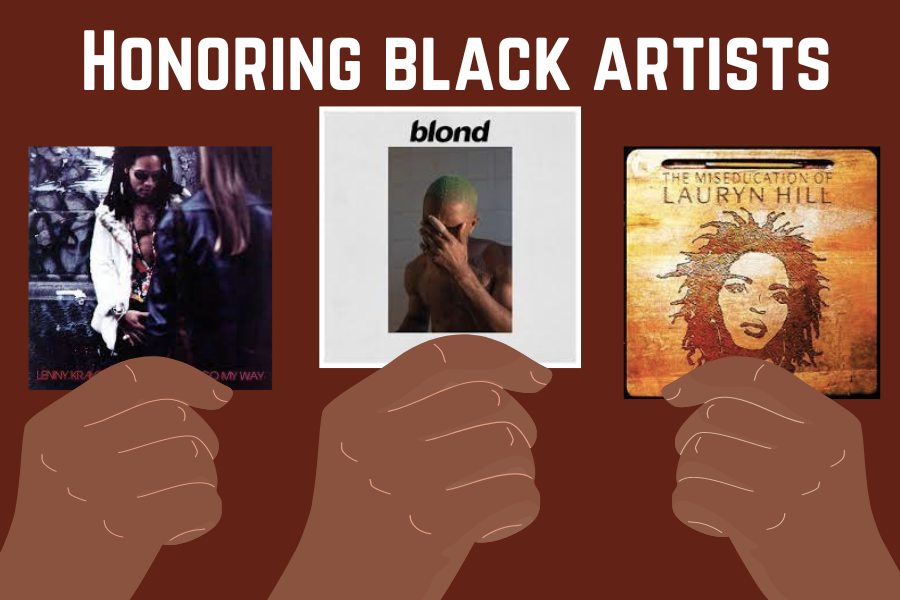
![2023 was defined by female vocalists such as Miley Cyrus, Taylor Swift and Paramore’s Hayley Williams as their diversity and talent amongst their respective genres topped the musical charts. Williams took to Instagram to show her gratitude for having owned the No. 1 spot on Billboard’s Top 100 chart. “We know enough by now to know success doesn’t equal value. That being said, to experience the [No. 1] on this album, as this version of Paramore, is such a sweet and surreal moment to celebrate together,” Williams wrote.](https://pwestpathfinder.com/wp-content/uploads/2023/12/2023-A-Musical-Recap-2.0-1.png)










![In perfect shooting form and with eyes on the rim, junior Tyler Kuehl is about to shoot his next basket in the last game of the season against Marquette High School. Kuehl has been playing basketball since he was 5. “Even though I played basketball all my life, the game-winning shots can be pressure, its confidence. If youre going into that shot and not thinking that youre gonna make it, its obviously not going in. And if you believe, [it will]. Thats the only way you can succeed,” Kuehl said.](https://pwestpathfinder.com/wp-content/uploads/2024/01/unnamed-32-1-1200x1200.png)

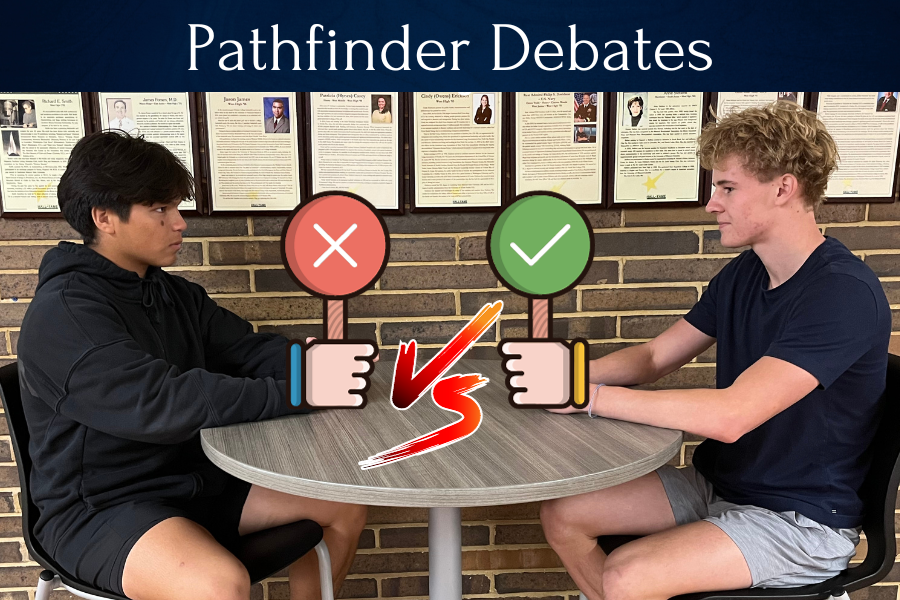


![“At the beginning of the year, I didnt really know a lot of [the] kids in my class [so] I tried to fit in [get to] know [them better]. Then, I started having a [friend] group I [now] stay with. [Now,] if I need to ask a question to understand the material better, Ill just ask. [Having more friends and being able to connect with people] makes me feel great. It makes me feel like Im not alone in [my] classes, and if anybody needs help, [we] always have [each other] to turn to. [I’m most proud of] meeting all the people throughout the years, growing and overcoming my injury. I feel like Im usually more kind to others and prefer their opinion over mine. I [am] always [open] trying what the group wants. When Im by myself, I [can] do something for [only] so long, but when Im with other people, I [can] do anything for as long as whoever Im with wants to. [As] I go through life, I want to make sure that everything I do is fun, [but] sometimes I cant help it because [I] need to have hard [moments in life;] moments being sad, mad or upset. Whatever you [choose to] do, always have fun and make sure it’s what you want.” - Ikhana Hildebolt, 9](https://pwestpathfinder.com/wp-content/uploads/2024/05/IkhanaHildebolt_9-1200x800.jpg)
![“Ive always been into [doodling] with pencils and ink. I used to watch YouTube drawing tutorials and [tried] to copy them. I had so much fun with that, but I felt like I was never [that] good [at art]; it made me lose motivation to draw. If I dont feel motivated to draw, I dont force myself to. I want drawing to be fun for me. I feel like every time I start again Im better than when I left. People can [create] art really fast but Ill sit there for hours and not be [finished] with the smallest [detail.] I learned to have patience [and] take my time. I used to try to get [fancy] materials. I was so stuck in the mindset that I needed [more supplies] to get better. I would get it and then feel discouraged because [my art quality] would be the same. Be patient with yourself. You dont need fancy materials to [make astounding] art. You can just use a wooden pencil and draw an amazing piece. I enjoy making beautiful [pieces] that have a message [behind it.] Its rewarding to see hours of work pay off as the final piece comes together.” - Morgan Summa, 10](https://pwestpathfinder.com/wp-content/uploads/2024/05/DSC_0034-1200x800.jpg)
![“I have been playing football for a long time and have enjoyed it. This year especially, I had so much fun. I was very happy when I made varsity because freshmen dont usually make the team [their first year of high school.] I love being around the guys [on the team] and I am going to miss the senior [mentors] next year. I will never forget the impact the seniors and Coach Duncan had on me. It was not only a team, it was a family. I felt like I belonged.” - Ethan Bain, 9](https://pwestpathfinder.com/wp-content/uploads/2024/05/IMG_7636-1200x800.jpeg)
![“This is my 10th year [teaching] at West. I started teaching because I struggled a lot in school, [but I decided to teach English because] I really like writing. I had a really hard time in high school and learning did not come easy to me in middle school. I would study for tests and still [did] not do well, or [I would] work really hard to write an essay and it just wouldnt come together. Once I got a grip on how to learn at the end of high school and in college, I really wanted to help students who were struggling to break down the learning process and make it easier because school is not easy for everyone. Math might not be your [specialty,] but maybe youre really good at theater, English or something else. So I’ve been helping students find what they are really good at, and [I have strived to] give them the confidence to continue.” - Diana Uffman, English](https://pwestpathfinder.com/wp-content/uploads/2024/05/DSC_0266-1200x800.jpg)
![“One thing that motivates me to write is being understood. A lot of my writing is about myself, my experiences, emotions and problems [that] I’ve had to deal with. Writing about it makes it easier for people to understand. [My work] might not [directly] say what the problem is in the story, but I love creating these fears, experiences and weird realities to reflect the issue. [A word I’d use to describe my writing is] probably ‘odd’. My writing style is [definitely] ‘out there’. I write a lot about death and forgetting people. [But] there’s also been a lot about just being alive, and [in the moment]. I struggle a lot with derealization, which is when nothing feels real to me. I write a lot about that, and it helps me feel more [grounded]. [Writing allows me to connect to others so] that people can relate to the characters in a story [which] helps them feel more comfortable with their own emotions. Every writer implements a piece of themselves, one way or another. Just putting [oneself] in a story [allows for both a deeper level of introspection and creativity]. ” – Onyx Coleman, 9](https://pwestpathfinder.com/wp-content/uploads/2024/05/pasted-image-0-1200x800.png)



Mikalah Owens • May 3, 2024 at 9:57 am
i <3 Lauren